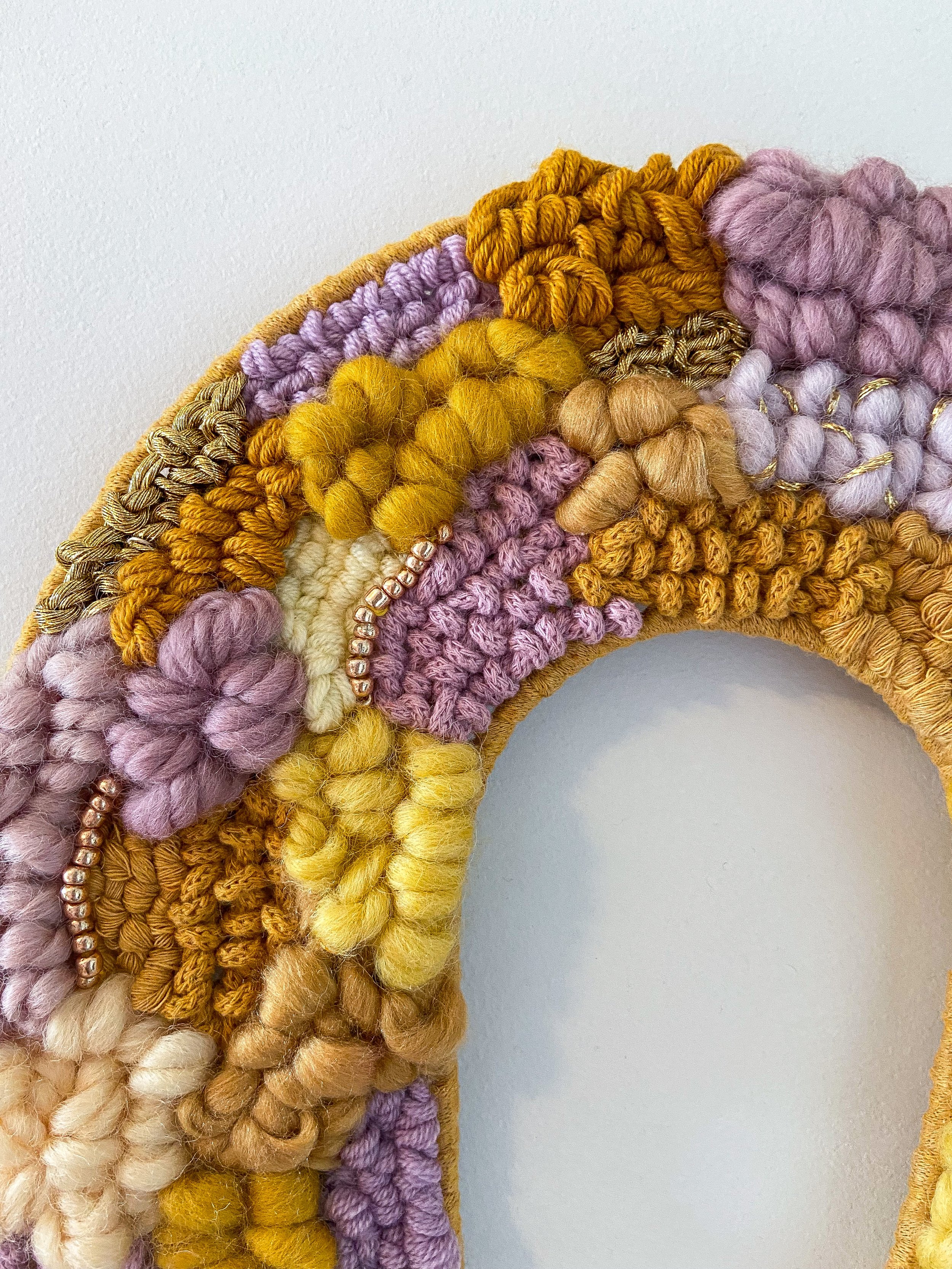Weaving tip for creating lush texture
3 ways to use a knotting stitch to add soft texture & intriguing detail to your woven pieces
1. Use a variety of fibres — I love to use all types of weaving materials from braided cord, fluffy pencil roving, macrame string, chiffon ribbon & so much more. And knotting a variety of thread thicknesses creates contrast, for example juxtaposing small shiny mercerised cotton knots next to soft voluminous wool. Or try doubling or quadrupling a fibre to create a ply-like texture and formed loops.
The above example shows how varied a knotted stitch can look depending on what fibre you use.
2. Use one yarn type in a range of colours.
You can create abstract patterns that really let the beauty of your chosen fibre shine. I am particularly partial to using loosely spun wool for this technique as it creates a softness that is calming for the eyes and oh-so-lovely to touch.
The above example uses a pencil roving style yarn.
3. Create 3D texture in a monochrome design. Explore a range of fibres in the same or similar tones with a variety of stitches. Knots are a beautiful way to create depth and contrast so well next to a flat stitch such as tabby or a thin soumak.
In this example, a knotting stitch has been used in contrast with other textural and flat stitches to create a rich texture.
These are a few examples, and you can view my latest work here. Happy creating.



